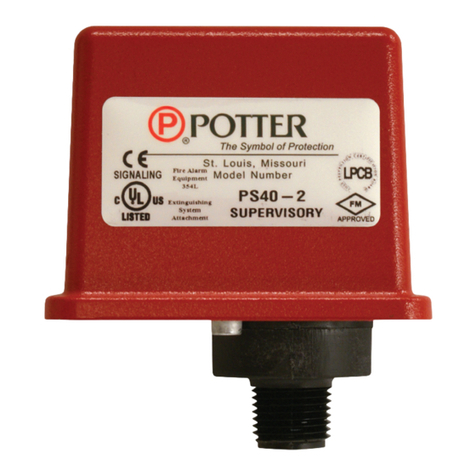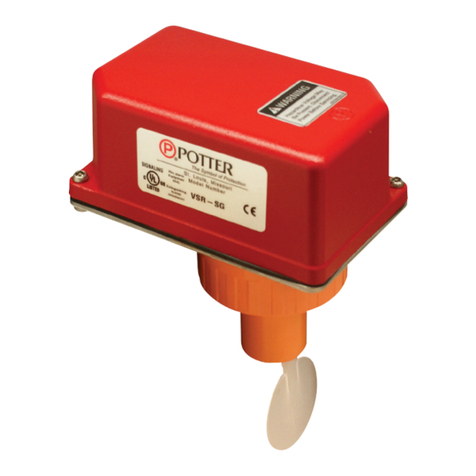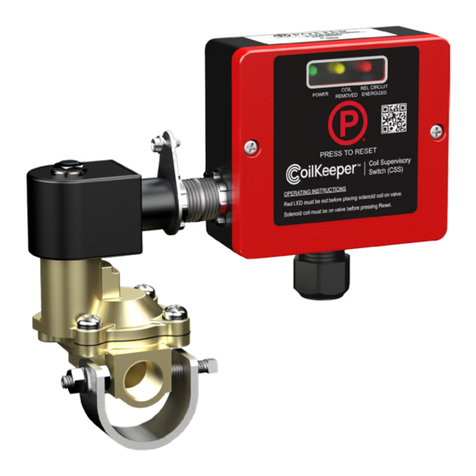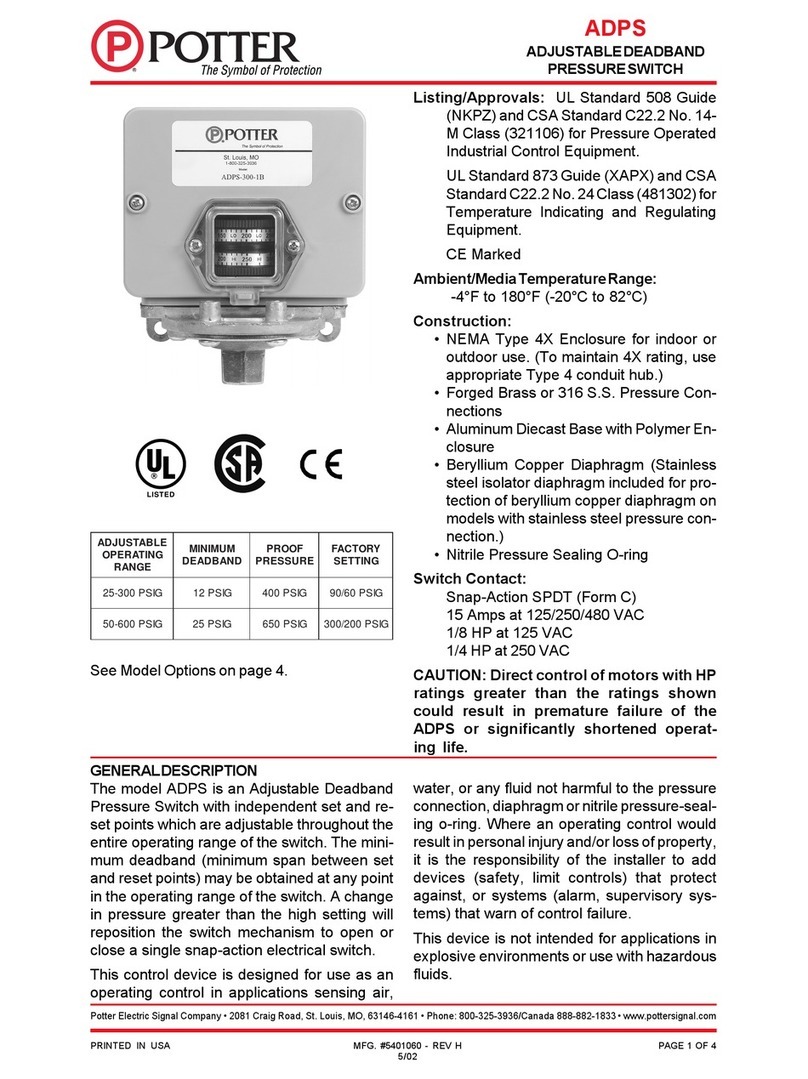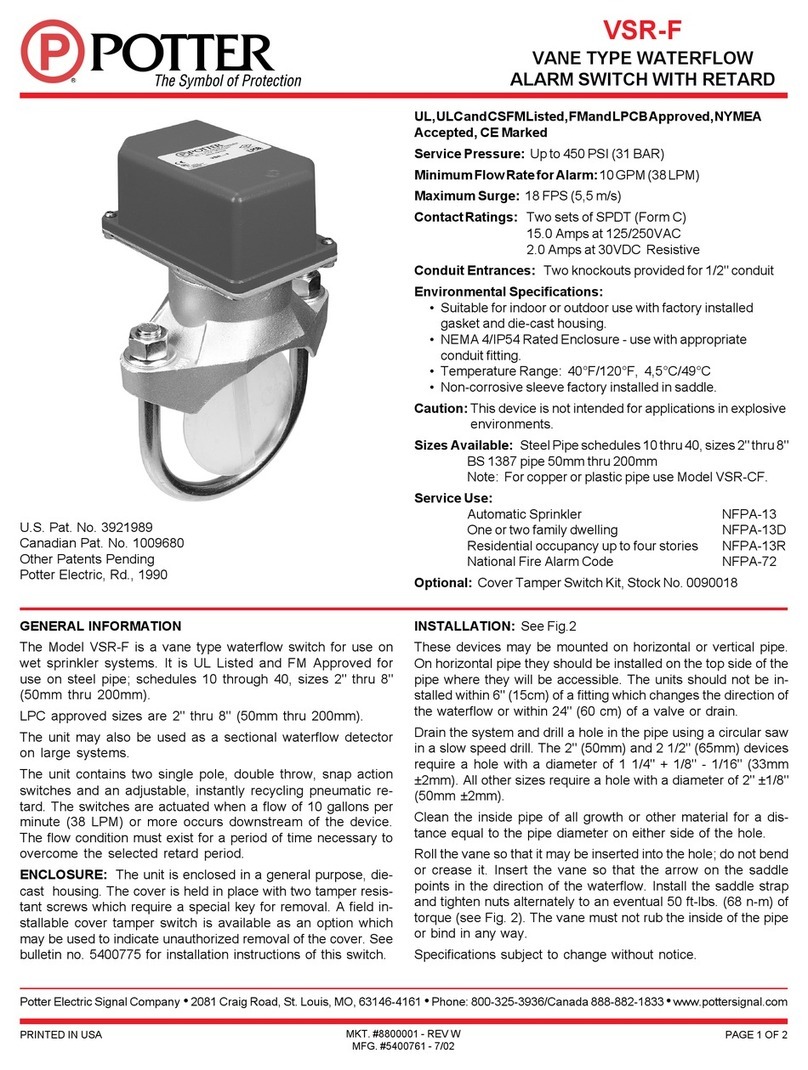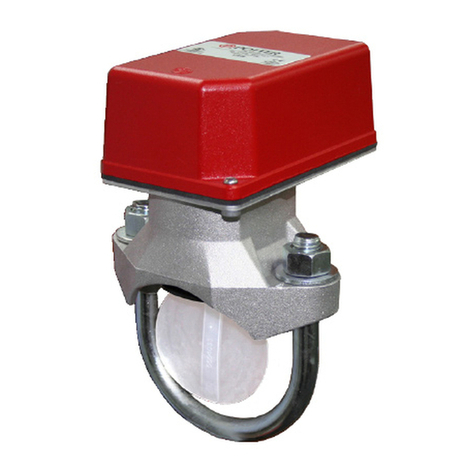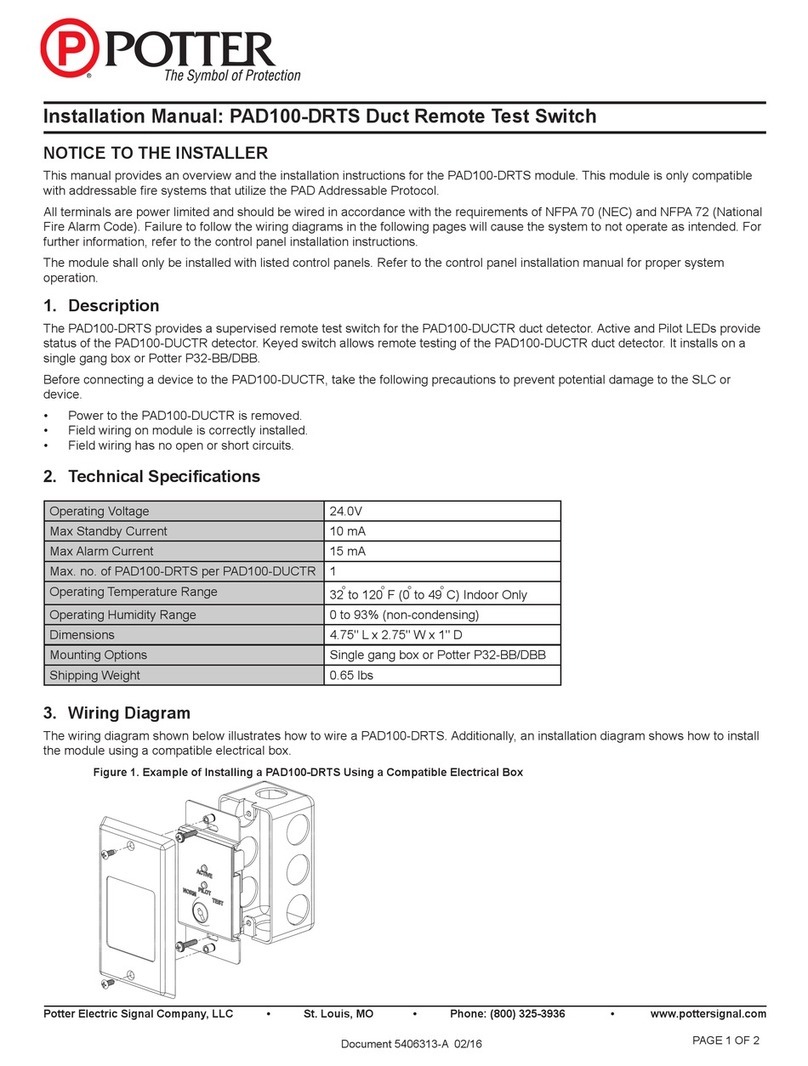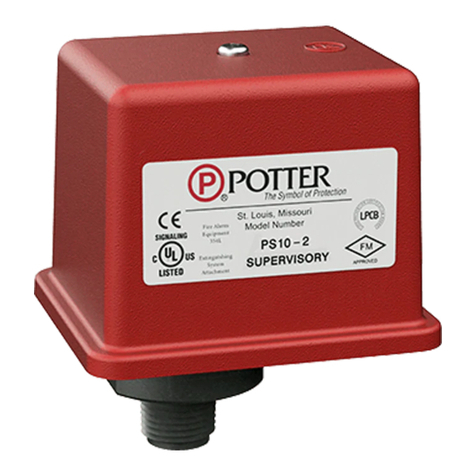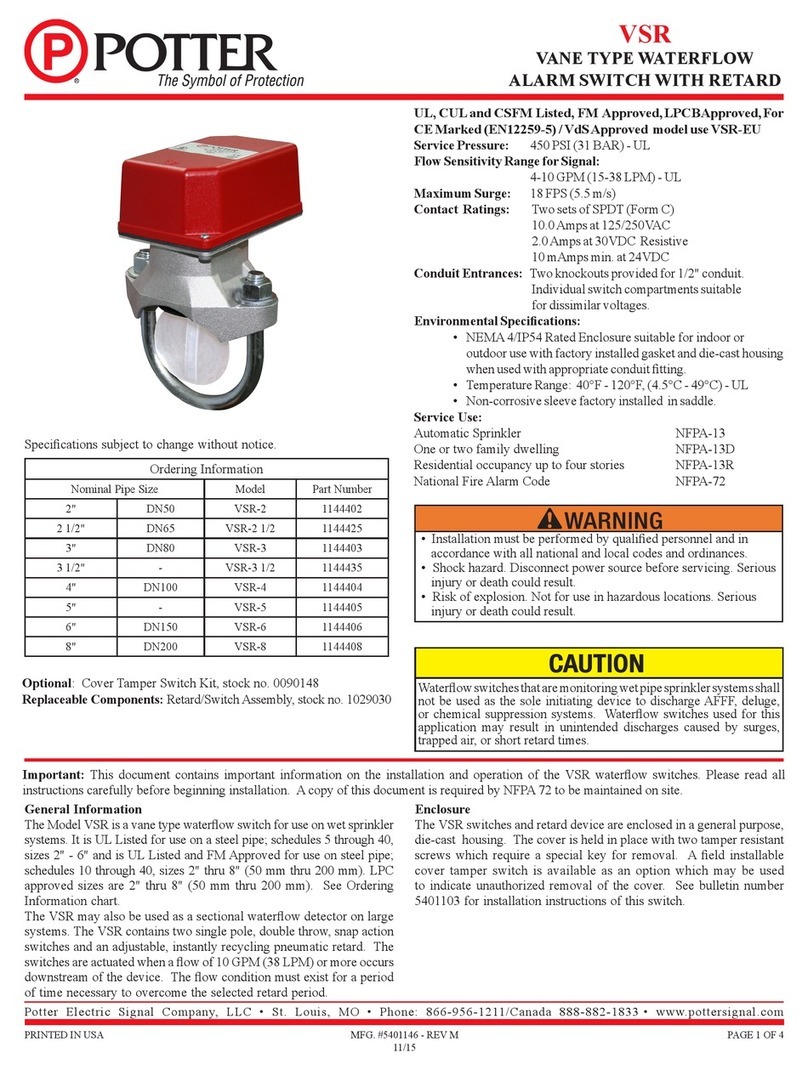
RBVS
Clapet à bille universel/électrovanne
Interrupteur de surveillance des crosses
5401591 - REV A • 1/20 PAGE 7 DE 12
Potter Electric Signal Company, LLC • St. Louis, MO • Téléphone : 800-325-3936 • www.pottersignal.com
Description
Le modèle RBVS est conçu pour surveiller la position entièrement
ouverte ou fermée d'un clapet à bille dans un système de gicleurs ainsi
que de surveiller la position d'une bobine sur une électrovanne pour
un système de pré-action/de déluge. L'unité s'adaptera à la plupart
des clapets à bille installés sur les disconnecteurs hydrauliques et les
lignes de détourage d'alarme des vannes de gicleurs secs, d'alarme et
de déluge. L'interrupteur fonctionne si la poignée du clapet à bille est
déplacée de la position normale. Toutefois, l'interrupteur ne consigne
pas l'emplacement de la poignée ou de la bille. Lorsque la poignée
du clapet à bille se trouve en dessous du piston RBVS, un actionneur
actionné à ressort entrera en contact avec la poignée de la vanne.
Lorsque la poignée est déplacée de la position, cet actionneur s'étend à
la position déclenchée, et les contacts RBVS changent d'état, ouvrant
et fermant ainsi le circuit.
L'unité comprend également un petit support de xation en « L » et une
pince en « V » pour permettre au RBVS d'être directement monté sur
le raccord leté de la bobine de l'électrovanne. Le piston du RBVS est
actionné par le goujon saillant via le centre de la bobine, voir la Figure
6. Si le technicien enlève la bobine de l'électrovanne à des ns de test,
le RBVS sera alors activé.
Une interrupteur de protection du couvercle est disponible et activé par
l'élimination du couvercle du boîtier RBVS. Si l'on essaie d'enlever
le RBVS en enlevant les supports de xation, l'unité entrera alors en
mode « déclenché ».
Le RBVS peut être xé sur la portion hexagonale du clapet à bille
ou sur le disconnecteur hydraulique ou sur le tuyau adjacent via
deux pinces de xation. Le RBVS est expédié avec trois ensembles
de trousses de montage pour accommoder les différentes tailles de
tuyau et de vanne, veuillez vous référer au Tableau 1. Un support de
décalage en forme de « L » pour monter l'enceinte de l'interrupteur et
un support d'extension apporte encore plus de exibilité de montage au
RBVS. Veuillez consulter les « Diagrammes de montage typiques » et
« Installations et fonctionnement » sur les pages suivantes.
Spécications techniques
Dimensions
Avec des grandes pinces : 6 po x 5 po x 5,3 po
(15,2 cm L x 12,7 cm l x 13,2 cm H)
Avec des petites pinces : 6 po x 4 po x 5,3 po
(15,2 cm L x 10,2 cm l x 13,2 cm H)
Avec l'assemblage de la pince à électrovanne :
5,1 po x 3,3 po x 6 po (13 cm Lx 8,38 cm l x 15,24 cm H)
Poids d'expédition 0,74 kg (1,65 lb)
Enceinte Matériau composite non corrosif
Plage de
températures -40°F à 150°F (-40°C à 65°C)
Enceinte de
protection du
couvercle en
option
Le boîtier comprend des attaches de xation
difciles à falsier qui nécessitent une clé spéciale
pour l'élimination. Une clé est fournie avec chaque
appareil. Pour le kit de protection du couvercle
d'interrupteur en option, veuillez commander le
numéro de pièce 0090224.
Voir le bulletin No. 5401598
Valeurs de contact
Contact SPDT : (Formulaire C) 10,1 A à 125 V CA
2 A à 30 V CC résistif
10 ampère minimum à 24 V CC
Protection du couvercle SPDT : 5 A à 125 V CA
1 mA à 5 V CC min
Limitations
environnementales
NEMA 4 (IP66)
Ne peut être utilisé dans les environnements dangereux
Utiliser un conduit et de connecteurs adaptés
Entrée de conduit Deux alvéoles défonçables fournies pour
la connexion du conduit de 1/2 po
(Voir l'avis à la page 6)
*Spécications susceptibles d'être modiées sans notication préalable.
Caractéristiques
• Assemblé aux États-Unis
• S'adapte à la plupart des clapets à bille de type levier
ou en « t » jusqu'à 2 po
• S'adapte à la plupart des disconnecteurs hydrauliques
jusqu'à 2 po
• Fonctionne sur les vannes ouvertes ou fermées
• Comprend les matériaux de montage pour surveiller
les bobines sur la plupart des électrovannes
• Accommode les ls jusqu'à un calibre de 12 AWG
• Kit de protection du couvercle d'interrupteur installé
en option (0090224)
• Conforme à RoHS
Important : Ce document contient des informations importantes concernant l’installation et le fonctionnement des interrupteurs de surveillance du
clapet à bille universel RBVS/de la bobine de solénoïde. Veuillez lire attentivement l’intégralité des instructions avant de commencer l’installation. Le
NFPA 72 exige qu'une copie de ce document soit gardée sur le site.
Avant d’effectuer un travail sur l'extincteur ou sur le système
d'alarme incendie, le propriétaire du bâtiment ou son représentant
ofciel doit être prévenu. Avant d'ouvrir une vanne fermée, assurez-
vous que cela n’altérera pas le débit à cause d'un extincteur ouvert
ou manquant ou l'absence de tuyaux, etc.
